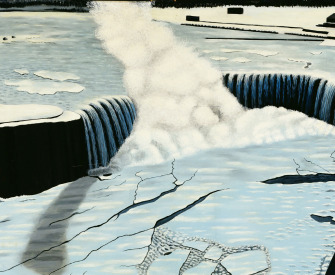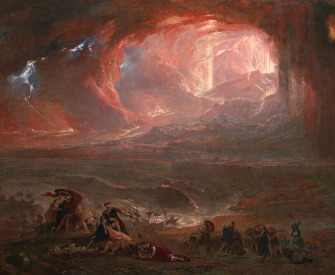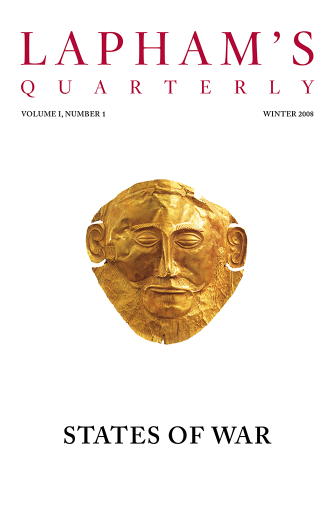The earth is our existence, and our body is attached to the earth.
—Daulat Qazi, 1650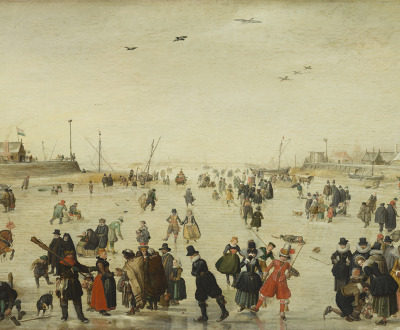
Winter Scene on a Frozen Canal, by Hendrick Avercamp, c. 1620. Los Angeles County Museum of Art.
It is one of the most celebrated, repeated, and misappropriated theatrical quotes in English: “Now is the winter of our discontent,” the beginning of Gloucester’s speech in Shakespeare’s Richard III. Whenever there is a political disagreement during the colder months, it is made out to be a winter of discontent. Perhaps this phrase will be less used in the future, as not the cold but the heat becomes a global challenge.
Winter was a word with particular resonance during Shakespeare’s lifetime. It was the time of the so-called Little Ice Age, when regional temperatures dropped by as much as 2 degrees Celsius on average.
For the inhabitants of temperate zones such as Europe, the creeping but unstoppable downward turn in temperatures heralded not only freezing temperatures and spoiled harvests but also hunger and hardship, epidemics and social unrest. In the eyes of many contemporaries, these strange phenomena were harbingers of the apocalypse, the end of the world.
If the world did not quite end, it certainly took a decisive turn toward the unfamiliar, the uncanny, and the downright hostile. In the 1570s, winter meant Mediterranean harbors froze over until late spring. Entire armies could march across the frozen Danube; Londoners held raucous fairs on the Thames, complete with booths selling everything from printed mementos to warming and intoxicating beverages. In France soldiers had their wine rations sawed from solid blocks of ice, while in Russia cavalrymen were said to fall off their horses, frozen solid.
Nor did the warmer seasons bring relief. Cool and rain-sodden summers did not allow harvests to ripen, and corn rotted in the fields before it could be brought in. Famines tripled in frequency, as did epidemics, which had a far more lethal effect on populations weakened by hunger. What had become of the order of the world ordained by God?
Shakespeare’s tragedy Coriolanus, set in ancient Rome, opens with a bread riot, like those breaking out across London during the Great Frost of 1608, when he was likely writing the play. Such riots became more frequent as urban populations suffered from the rapid inflation of grain prices due to failing harvests. “Europe where the sun dares scarce appear / For freezing meteors and congealed cold,” sighed Christopher Marlowe circa 1578. In Flanders, meanwhile, winter became a celebrated new subject of landscape painting.
Causes of the Cold
We do not know exactly what caused temperatures to drop by up to 2 degrees Celsius, beginning in the late Middle Ages and reaching a frosty climax during the late sixteenth and seventeenth centuries; even the duration of this climate episode is subject to considerable debate. The temperature change, however, seems to be mostly agreed upon. Two degrees Celsius may not seem a large number, but it is worth remembering that the difference between the average temperatures of the twentieth century and the last glacial maximum during the Ice Age twenty thousand years ago, when most of the Northern Hemisphere was encased under a thick carapace of glacial ice, amounted to 3.5 to 5 degrees Celsius on average.
The effects of this global cooling are richly documented through analyses of ice cores, plant sediments, tree growth, and population patterns of plants and animals as well as through human sources: diaries and harvest dates, commodity prices and logbooks, letters, learned tracts, sermons, and popular songs. All eloquently tell stories of hardship and violence as well as uncertainty and intellectual discovery in the wake of increasingly frequent disruptions of what until then had been understood as the natural order.
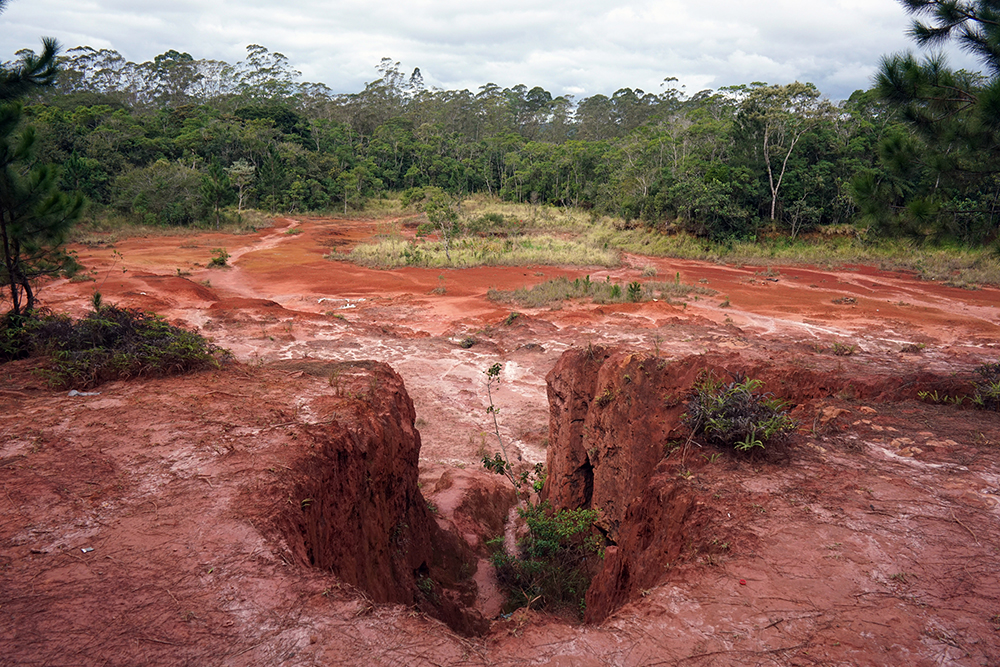
Deforestation outside São Paulo, 2017. Photograph by Moises Saman. © Moises Saman / Magnum Photos.
Among the most popular explanations for this change is an as yet unaccounted for wobble in solar activity, but human influences have been explored, too. Recent research suggests that the European conquest of South America may have played a part: after European viruses greatly reduced the indigenous population, forests began to reclaim land previously used for farming. Then the increased growth of trees both in number and in size absorbed more CO2 from the atmosphere and caused the cooling, or so the theory goes. Yet that would explain at best a fraction of such a dramatic climatic event, which began almost a century before Christopher Columbus set sail.
Even so, the Little Ice Age was a period that left so much valuable material, so much data allowing us to reconstruct at least the European experience, that it can be used as a case study for exploring a simple but intriguing question: What changes in a society when the climate changes?
Learning from History?
The Little Ice Age offers a historical point of cautious comparison for the most existentially urgent problem of the present. Cooling is not heating, of course, and the Little Ice Age was almost certainly not man-made. Yet while the cultural, economic, political, and technological context was quite different, it was exactly these areas of human life that would change dramatically as direct or indirect consequences of societies being forced to adapt to climate change.
A whole world had been turned upside down. During the most intensive period of the Little Ice Age, roughly from 1570 to 1685, feudal economies had changed into market-based ones; urban centers flourished; trade was becoming international, funded through stock markets and banking systems; the scientific method of theorizing and seeking empirical proof emerged; vast numbers of schools and universities were founded; an unprecedented number of slaves were sold and exploited; warfare was revolutionized and professionalized; and ideas such as freedom and equality, tolerance and universalism, had ceased to be sheer heresy and were being taken seriously—the first step toward the Enlightenment and the French Revolution.
A medieval world had pivoted toward a modern one—not simply because of a domino effect beginning with the Little Ice Age but through a series of interlinked developments, all of which owed part of their urgency and dynamism to changes made necessary or encouraged by climate change. This was a global phenomenon, its reach well documented down to the local level by scientific analyses and modeling. At the same time the world saw global waves of hunger and power struggles, according to contemporary observers, parts of Ming China lost half their inhabitants; during the so-called Smutnoye Vremya, or Time of Troubles, Russia suffered a famine that killed two million and plunged into civil war and peasant rebellions; and even South American societies suffered periods of instability and agricultural collapse, though the existing documentation does not support a direct link with cooler temperatures in these regions.
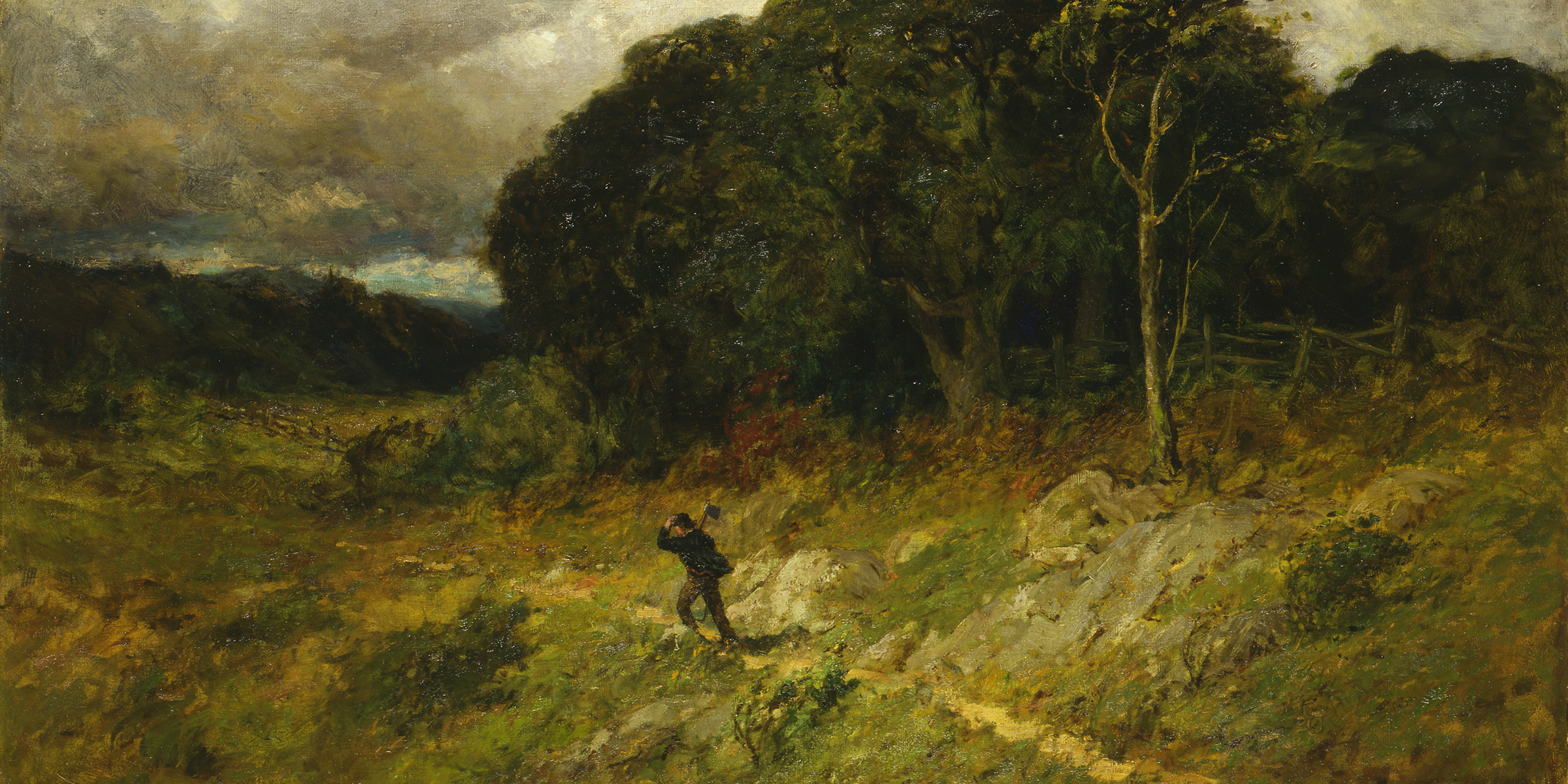
Approaching Storm (detail), by Edward Mitchell Bannister, 1886. © Smithsonian American Art Museum, Washington, DC / Art Resource, NY.
The settlers in the early colonies of what is now the United States are a good example of why so much historical interest has remained focused on the West: they kept diaries and weather observations, wrote letters, collected written testimonies in court cases, and kept receipts and lists of prices for grain and wine, of harvest dates, qualities, and quantities harvested. They gave historians something to play with, as with the especially harsh winter of 1609–10. The colonial settlement of Jamestown had already experienced a scorching summer and a failed harvest in the years before, leading the diarist George Percy to comment anxiously about the perils of “verie bare and scantie of victualls, furthermore in warres and in danger of the Savages.” During the winter more than half the residents died of hunger and cold.
These so-called savages—the Native American tribes with whom the settlers traded—left no equivalent hoard of information, leaving it to conjecture alone to understand how the same harsh winters affected them. Were they more adaptable? Did they know how to cope, to retreat, to bide their time throughout the worst of the cold and the storms? Or did they simply die as well? And what about the animals?
Adaptation—and Failure to Adapt
An intriguing image emerges from the human documents, scientific climate data, and historical trends, showing the trajectory of how societies learned to adapt to constant pressure from failing harvests and harsh winters.
At the beginning of the Little Ice Age, during the second half of the sixteenth century, European populations still mainly relied on subsistence agriculture. The social order was a pyramid, with the poor at the bottom and land-rich nobles on top. Society began to fissure dramatically as the cold continued. Local agriculture and traditional farming were failing with alarming frequency, and societies began to react.
At first the cold was interpreted as divine punishment and countered with prayers and persecutions. When those tactics failed, slowly and by trial and error, other solutions emerged. Botanists began to research more effective farming techniques, including cultivation of new crops, such as potatoes, which are less sensitive to the cold and less exposed to destruction by marauding armies. At the same time, another wave of disruption changed the face and social structure of the countryside (that is, most of Europe). In the wake of failing harvests, when poorly equipped subsistence farmers had done their inefficient best and failed to generate sufficient tax revenue, land ownership was restructured. The commons were gradually abolished, and the meadows the rural poor traditionally had been allowed to graze their cattle on went to commercial agriculture and sheep for wool destined for foreign markets.
The end of the commons expelled countless landless poor into the cities to pursue work. At the same time, cities such as Amsterdam grew wealthy and powerful from the trade in grain, creating a new economic model of growth based on exploitation. It was brutally effective and would become the secret of Europe’s global dominance for three centuries.
When nature is overriden, she takes her revenge.
—Marya Mannes, 1958Europe was in ferment, a development that arose from the land and went on to make itself felt in an intellectual revolution. The advance of scientific reasoning was just one of many new approaches to understanding, explaining, and manipulating the hidden laws of the world, from necromancy and black magic to biblical numerology (the passion of the mature Isaac Newton) and secret mystical (and men-only) societies. From this cauldron of ideas and methods came a new way of thinking about human beings as creatures endowed with rights and freedom, and about the natural world, which began to be seen as a vast mechanism following mathematical principles, not divine will.
When temperatures and harvests recovered to pre-1570 levels during the eighteenth century, Europe’s social, political, economic, and even philosophical landscape had changed beyond recognition. Late medieval feudal societies had entered a modernity dominated by more dynamic economies, early industrialization, the rise of the urban middle classes, natural sciences, and ultimately the Enlightenment, which argued forcefully that the old order must make way for a new, egalitarian form of living based not on faith but on reason.
What changed? Everything did. It would have been far more difficult for a person from around 1550 to understand the world of one century later than it would have been for a person living around the year 1000 to understand the world of 1550.
All Change
Will today’s global warming usher in the same scale and depth of transformation as the Little Ice Age did four centuries ago? Are our institutions, our ways of cultivating the land and using natural resources, our societies and beliefs more durable because they are simply better, or are they just symptoms of a way of life doomed to crumble and disappear? What will come next? Will it be a dystopian future of urban ruin and civil war in the heat-scorched wastelands, or are different, more constructive futures possible?
The Little Ice Age can be used to illustrate this process, particularly its difficulties and stumbling blocks. During the 1570s, when icy winters and cheerless summers darkened much of Europe, people understood that a change was underway—and that it was a problem. Their reaction was entirely medieval. Theologians and priests made clear that this was a moral matter, God’s punishment for human sinning, and that penitence, processions, masses, fasting, and flagellation would soon change the Lord’s grim purpose. Another response was more brutal: often after many bad harvests came a wave of witch trials in central Europe, and the accused (mostly, though not only, vulnerable, widowed, or unmarried women) were believed to have spoiled the harvest, made cattle sick, and had sex with the devil. The last accusation may speak to the preoccupations of European judges and inquisitors, but the others were directly linked to weather-related damage.
Neither the processions nor the witch trials ameliorated failing harvests and frequent famine. It is interesting to note that initially people simply seemed unable to imagine change on the scale that would be necessary; global cooling was not even properly identified, let alone understood.
European thinkers did not have an established scientific method or any experience with democracies. They lacked the images or the words to describe and begin to implement a new kind of agriculture, trade, government, war, etc. All this would happen astonishingly quickly, within only three or four generations, but the concepts and mental images were still in a process of formation.
The existence of a public sphere of published and distributed works, mostly in Latin but increasingly also in the vernacular, played a powerful role in this often clandestine and dangerous debate. In salons and books, in lewd or satirical pamphlets and ditties sung on street corners, a society discovered and experimented with new ideas about who they were, about justice and equality, the public good and natural rights, political power and revolution.
While political debates were fed and animated on every street corner, the new market economies depended on specialists, people who could read and write and count—doctors and lawyers and farm managers and merchants and bookkeepers and professors and schoolteachers and scientists and political provocateurs, most of whom lived in cities.
It is hard when nature does not respect your intentions, and she never does exactly respect them.
—Wendell Berry, 1985These middle-class people created new wealth and held a great deal of informal power, but they still had little say in political matters, which were the province of the aristocracy and the church. The response from several thinkers, many of modest backgrounds, was to revitalize an ancient argument about the fundamental equality and freedom of all humans. Discussions along these lines had exercised Greek thinkers, but not much. They had been conducted more vigorously in ancient China, and they had animated the theology—if not the power plays and the deeply hierarchical social attitudes—of Christianity. But the argument had never established itself as central to any philosophical tradition and now seemed irrelevant.
Before the passionate debates we have come to think of as the Enlightenment, most Europeans considered it a fact that a man was better than a woman, a Christian better than a heathen, a nobleman better than a commoner. The idea that they should all be equal in rights, and already were equal in reasoning and in dignity, seemed not just preposterous but dangerously heretical. To put equality at the center of Western thought was a phenomenal achievement of brave thinkers, but it would not have been possible without the instability of power and authority brought by the Little Ice Age and the ensuing rise of a dynamic and determined social group: urban educated people.
In this grand story, the mechanisms of change are as instructive as the forces of obstruction. While change brought economic opportunity and social mobility, obstruction came from those seeking to react to present challenges with solutions from the past. Ultimately, burning witches was seen as an ineffective remedy for poor harvests; different crops and techniques were found to work better. Eventually, a metaphorical and religious understanding of the world made way for Newton’s laws and Galileo’s elegant reorganization of the universe.
This has interesting implications. Existing expertise and institutions, theories and technologies, have been instrumental in causing and accelerating global heating. Highly educated experts have developed an economic model that demands the continuous intensification of exploitation and endless growth, based largely on the use of fossil fuels. It certainly does not look as if our system of knowledge proved to be a radical improvement on the various models of inquiry tested at the dawn of modernity.
Mental Images
Once more, climate change seems to stand at the beginning of a new chapter in the history of our species. It is our most radical existential threat yet.
It is ironic that growth based on exploitation, the secret of the West’s success and global dominance, has become the biggest threat to peace, prosperity, and safety. Long before it was put into practice, the economic world order of the present was dreamed up by a handful of mercantilist authors during the sixteenth century as a way of financing a great army.
During the Little Ice Age, as harvests became alarmingly unreliable and tax revenues from agriculture sagged while rising grain prices caused inflation, European rulers and their advisers decided to put more emphasis on manufacturing and trade via a simple model that treated the economy as a zero-sum game: beggar thy neighbor and export more than you import to achieve what one today might call a positive trade balance.
Power in the battlefield—the be-all and end-all of politics at the time—could be reached only by economic growth built on systematic exploitation of natural and human resources at home and in the colonies. Though exploitation was nothing new, a systematic attempt to achieve ongoing economic growth through an increasingly globalized use of natural resources and cheap human labor, often slave labor, was unprecedented.
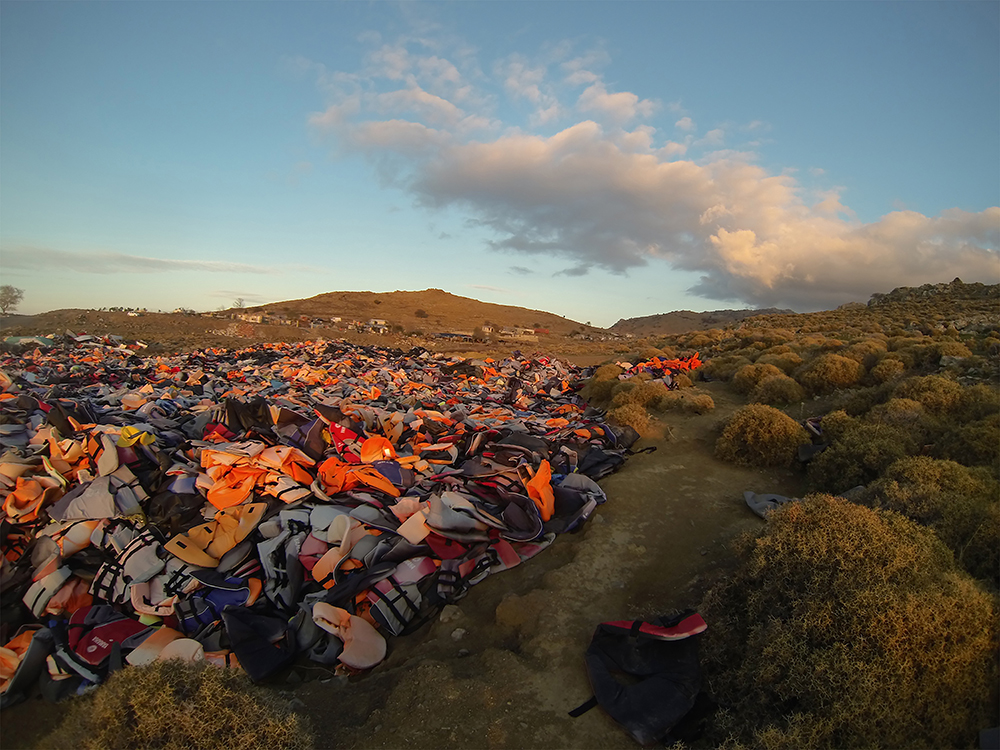
Division Line, by Pam Longobardi, 2016. Archival pigment print, 27 x 40 inches. Site photograph of the “life-jacket graveyard,” Lesbos, Greece. © Pam Longobardi, courtesy the artist and HATHAWAY | Contemporary Gallery, Atlanta.
The discovery of fossil fuels—coal and later oil—changed the equation. The explosive growth in productivity enabled leaps in wealth, technology, and science as well as, for Western countries, an economic model of constant growth based on vastly increased consumption. This growth has not only polluted oceans but purchased civilization: liberal democracies rely on the tax revenues of strong economies to finance their parliaments, policing, defense, judiciaries, schools, infrastructure, and other details of civilized life designed to make basic rights into social realities. It seems rash, or at the very least difficult, to abandon growth, yet it is also an absolute imperative.
If there is anything to be learned from this historical case study, it is that the crisis of the Little Ice Age was not solved by doing more of what had come before and doubling down on medieval ways but in daring to imagine change and then implementing it. This process was characterized by trial and error; it was a time of seekers and experimenters. Some new intellectual approaches imagined during the period have stood the test of time, while others have not. We still rely on the scientific method, but we appear to have all but given up on necromancy, conversations with archangels, and alchemy.
In the Critical Zone
In the present situation there is no doubt about the science, though there is a sizable constituency that either has not been able or, more critically, willing to take it on board and has decided to dismiss it—as happened in the seventeenth century—as enemy propaganda. But it is clear what needs to happen. On the bright side, leading scientists believe a fast and radical decarbonization of major economies and societies, entailing a rapid phasing out of fossil fuels and the creation of an economy with a minimal CO2 footprint, is actually possible and could be realized surprisingly quickly. The investments required for rapid decarbonization, structural changes, and renewable energy production are immense, but they offset the mounting costs of climate change, which inaction is certain to multiply.
Already factors directly linked to global heating, such as rising sea levels, intensified droughts and extreme heat, tropical storms, floods, dramatically reduced harvests, the migration of the U.S. wheat belt, and the increasing scarcity of drinking water, are costing global economies billions in insurance claims, lost business, forced migration, infrastructure breakdowns, and lost tax revenue.
The mansion of modern freedoms stands on an ever-expanding base of fossil-fuel use.
—Dipesh Chakrabarty, 2008Not adapting to climate change is the expensive option, but in many respects the West’s narrative is simply stuck. A logic of continued growth and exploitation will never be sustainable; expansion is in its DNA. In effect, our societies are still burning witches in response to global heating and relying on a fatally flawed logic of yesteryear.
It is surprising that logic still persists, but old intellectual habits die hard. Yet the beginnings of modernity during the Little Ice Age featured much wider debates. Some formulated an idea of humanity no longer dependent on divine grace, but as a product of nature and a part of it, animated by the same passions.
While the most radical Enlightenment thinkers argued passionately that human beings are not God’s creatures but simply organized matter, they did not stop believing in the possibility of creating an earthly paradise through reason and progress. Perhaps the experience of the twentieth century and the existential challenges of the twenty-first have made us somewhat more modest.
In fact, Homo sapiens’ place in nature is considerably less important, less numerous, and less ubiquitous than plankton, for instance. Its biomass is outweighed by ants, but its short-term effect on the delicate balances of natural systems is devastating.
After evolving in the critical zone within the thin membrane of earth’s atmosphere and developing technologies that have far outpaced its long-term planning or understanding, Homo sapiens faces only one viable survival strategy, one borrowed from the seventeenth century: to invest in a paradigm shift in humanity’s relationship to the rest of nature and in self-perception. Nothing less than a second Enlightenment may be needed to finally push humanity off its parapet and reconcile this strangest of all animals with its place in the natural world.
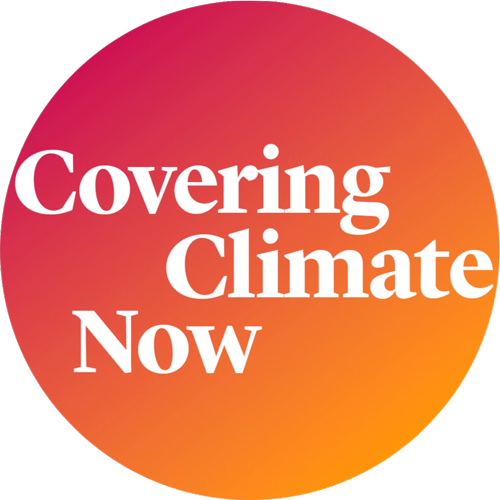
This story is part of Covering Climate Now, a global collaboration of more than 300 news outlets to strengthen coverage of the climate story.
